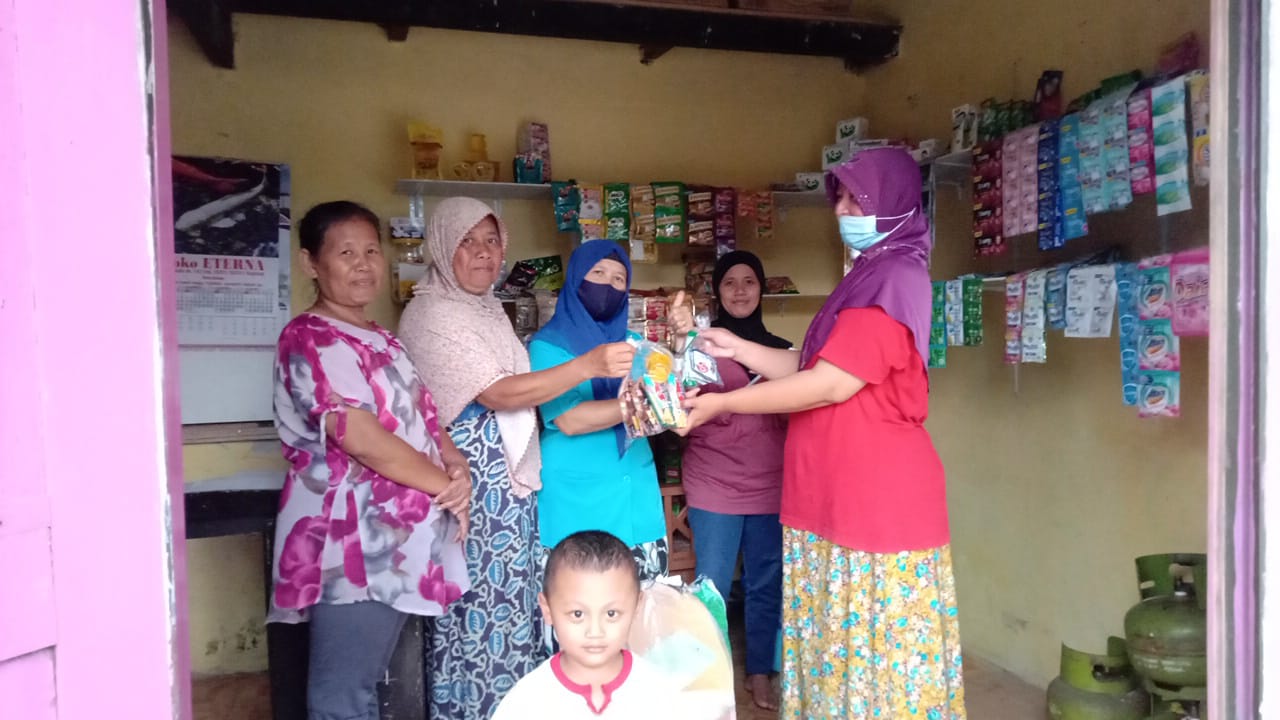Community Resilience Fund enables women to lead in building resilience of communities in Java
Address structural inequalities
Collaborative action and investment
Devolve decision making
Flexible programming and learning
Invest in local capabilities
Patient, predictable, accessible funding
Organization: Yakkum Emergency Unit
Donor: MACFA and SIDA
Beneficiaries: 2000 people (65 women’s group with around 30 members each)
Photo credit: Yakkum Emergency Unit
Across 44 villages on the island of Java, women’s groups are working together to plan and executive a diverse range of initiatives to reduce the risk that climate change disasters present, adapt to changing weather patterns, and develop stronger, more resilient local communities.
Rural and urban areas alike in the province of Yogyakarta in Central Java are among the most vulnerable parts of Indonesia to the impact of climate change. The tropical climate, which is heavily influenced by monsoonal patterns, is being increasingly altered by changing climate, leading to hydrometric disasters such as flash floods and droughts. For rural communities, agricultural yields and availability of water sources are both impacted, which increases their spending on water and animal feed. Urban communities are also hit by floods and experience health problems due to increased incidence of heat stroke and poor air quality.
To support these vulnerable communities, YAKKUM Emergency Unit (YEU), a unit established by YAKKUM Christian Foundation for Public Health in 2001, established the Community Resilience Fund (CRF) mechanism in 2015 – a Huairou Commission funded project to assist 65 women’s groups to increase their communities’ resilience against disaster and climate change. Each of the groups defined actions based on results from their own Participatory Vulnerability and Capacity Assessment (PVCA), which included risk mapping and stakeholder mapping.
The underlying philosophy of YEU’s work, explains David Pattinama, Project Manager for promoting grassroots women-led resilience community development, was to empower local people from the very start, and draw on their unique knowledge of challenges and practical solutions: “Our ultimate goal was that women would be recognized as experts of local knowledge and practitioners, and would be able to participate in a meaningful way, access financial and non-financial support from relevant partners to scale-up local actions and engage in disaster risk reduction, climate change adaptation, and community development.”
 “Typically when communities gain access to financial resources, these resources are already destined for specific activities,” added David.“This leaves communities without a voice in determining how to use funds.” Flexibility was, however, pivotal to the community resilience fund. “Each women’s group received between USD 1000 and USD 2000, 50 percent of which is allocated to capacity building activities, such as risk mapping, and 50 percent used to help them develop their priority actions.”
“Typically when communities gain access to financial resources, these resources are already destined for specific activities,” added David.“This leaves communities without a voice in determining how to use funds.” Flexibility was, however, pivotal to the community resilience fund. “Each women’s group received between USD 1000 and USD 2000, 50 percent of which is allocated to capacity building activities, such as risk mapping, and 50 percent used to help them develop their priority actions.”
Local actions were wide ranging and managed in collaboration with local stakeholders. These included adaptive farming using hydroponics (which involves growing plants in a water-based nutrient solution instead of soil) and aquaponics (which combines growing fish and other aquatic animals and hydroponics), in addition to natural resource management, and flood and landscape mitigation efforts (such as through the planting of perennial trees or fruits with herbs and vegetables).
 At a community level, the resilience initiatives provided local people with added profits and supported local preparedness, whereas the women’s groups enhanced their leadership and organizational skills, together with demonstrating their capacity as agents of change to drive the resilience agenda. This led to recognition by the local government, and their involvement in the development planning process in their respective communities. Being involved in this planning process was important, as it enabled the women to both influence local government to support and scale up their resilience actions using village funds and to integrate them with local government programs.
At a community level, the resilience initiatives provided local people with added profits and supported local preparedness, whereas the women’s groups enhanced their leadership and organizational skills, together with demonstrating their capacity as agents of change to drive the resilience agenda. This led to recognition by the local government, and their involvement in the development planning process in their respective communities. Being involved in this planning process was important, as it enabled the women to both influence local government to support and scale up their resilience actions using village funds and to integrate them with local government programs.
The initiatives were locally led, notes David Pattinama: “The project strengthens grassroots women groups at a sub-village and/or village level to initiate resilience actions. The decisions are made mostly by the group, and/or in consultation with relevant local governments for accessing programs or village budgets and with local communities in the implementation of the resilience actions.” To this end, a number of stakeholders provided support, including local government and academics, who assisted with field studies and research.
In total, around 2,000 people have benefited directly from the project across the 44 different villages. The women involved have improved their leadership skills and expanded their networks in order to share their learnings, in addition to contributing to the reduction of gender inequality, building social cohesion, and influencing decision making as a result of their local knowledge and expertise.
 As with any such project, a number of challenges were encountered. These included a lack of local resources to support the resilience initiatives during the COVID-19 pandemic, as the majority of village’s budgets were allocated to pandemic-related efforts.
As with any such project, a number of challenges were encountered. These included a lack of local resources to support the resilience initiatives during the COVID-19 pandemic, as the majority of village’s budgets were allocated to pandemic-related efforts.